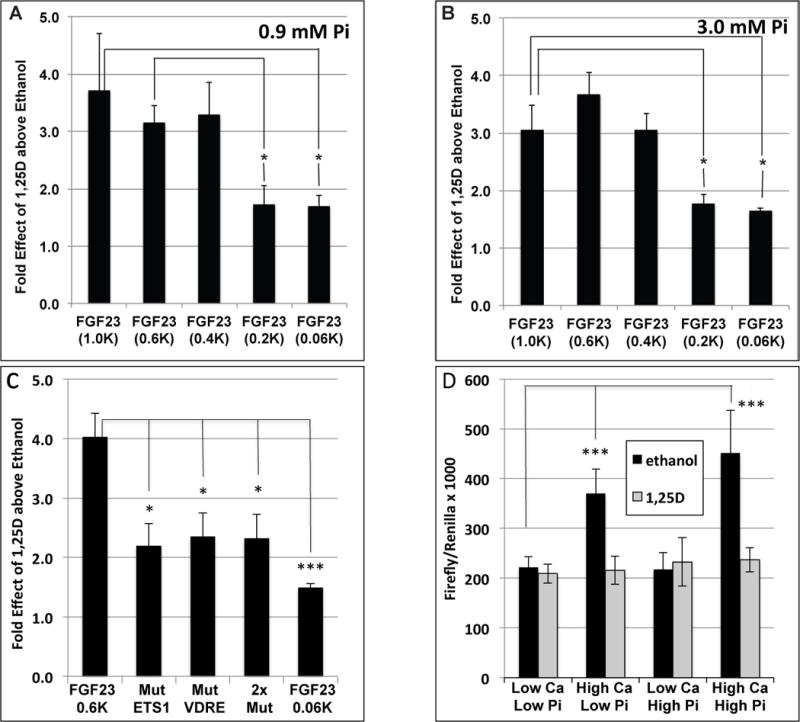Figure 8.

Dissection of the mouse FGF23 proximal promoter. (A) A promoter fragment containing 1.0 kb of promoter sequence (1.0K) was linked to a luciferase reporter and transfected into K562 cells. Transcription of the reporter gene was stimulated 3 to 4-fold by 1,25D in the presence of 0.9 mM (low) phosphate. This transcriptional effect is significantly reduced to less than 2-fold when progressively 5′-truncated promoter fragments (e.g. 0.4K or 0.2K) are tested. (B) Profile of transcriptional stimulation by 1,25D of FGF23 promoter fragments, transfected into K562 cells, is essentially unaffected by 3.0 mM (high) phosphate concentration when compared to the 0.9 mM phosphate results. (C) When transfected into K562 cells, a −0.6 kb promoter fragment-luciferase construct of the mouse FGF23 promoter yields a 4-fold response to 1,25D. This effect is significantly diminished to 2.2 to 2.4-fold by mutation of either the VDRE or ETS1 site, or both simultaneously, with all responses not significantly different from the minimal promoter (−0.06 kb) control construct. (D) High (6.0 mM) calcium, but not high (3.0 mM) phosphate, significantly (1.7 to 2.0-fold) induces the −1.0 kb mouse FGF23 promoter-reporter construct, when it is transfected into MC3T3-E1 osteoblast-like cells.
